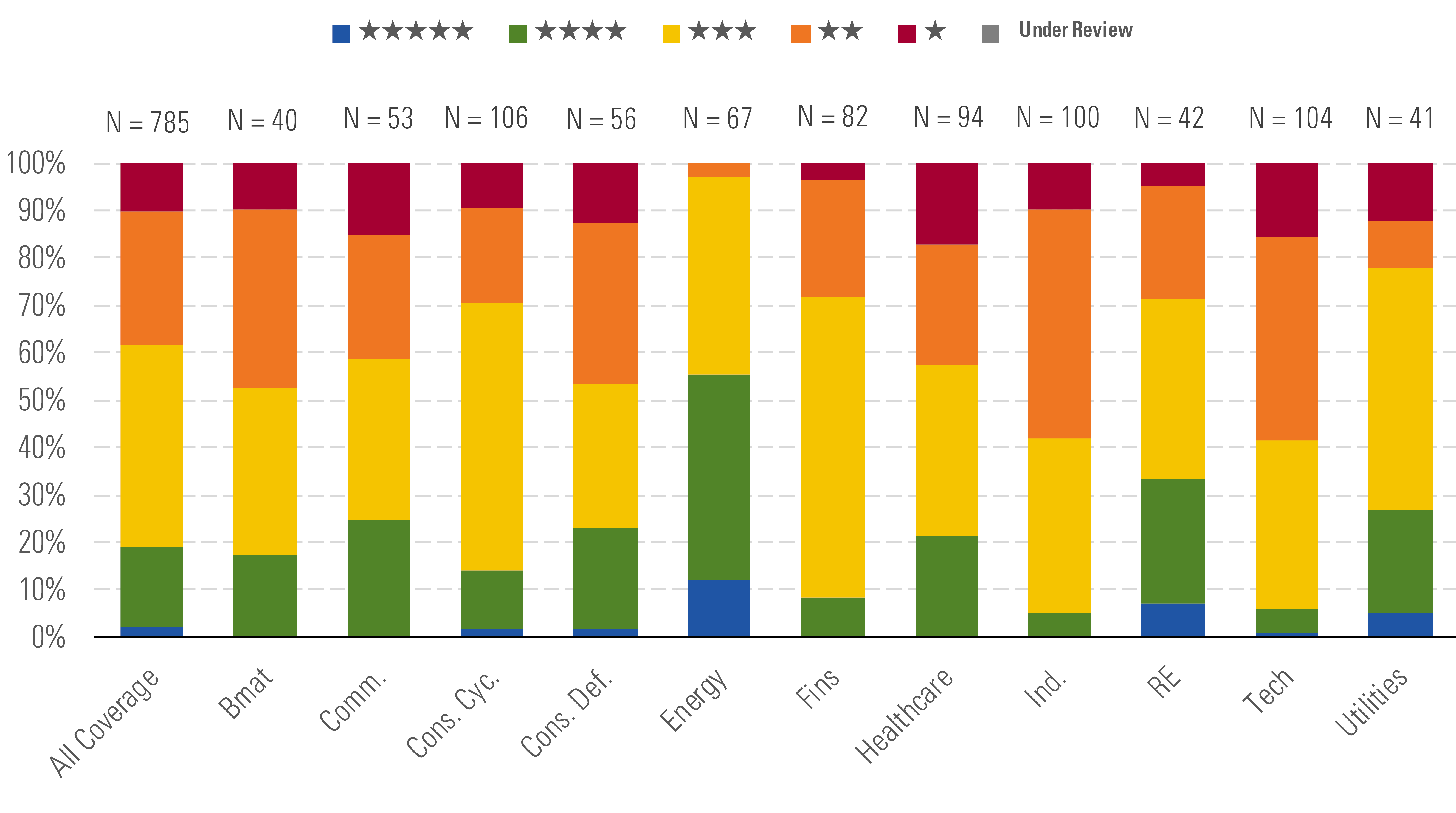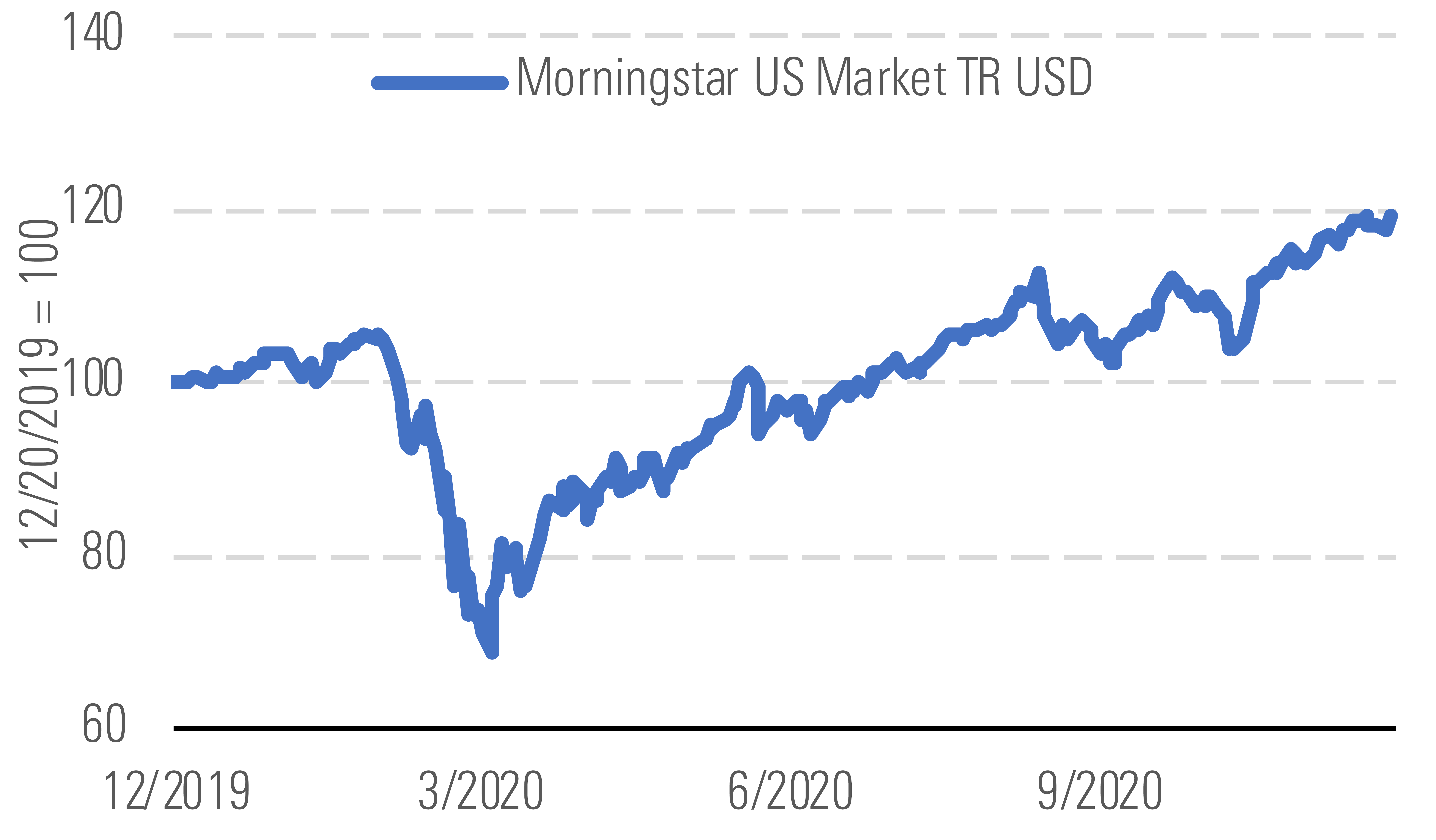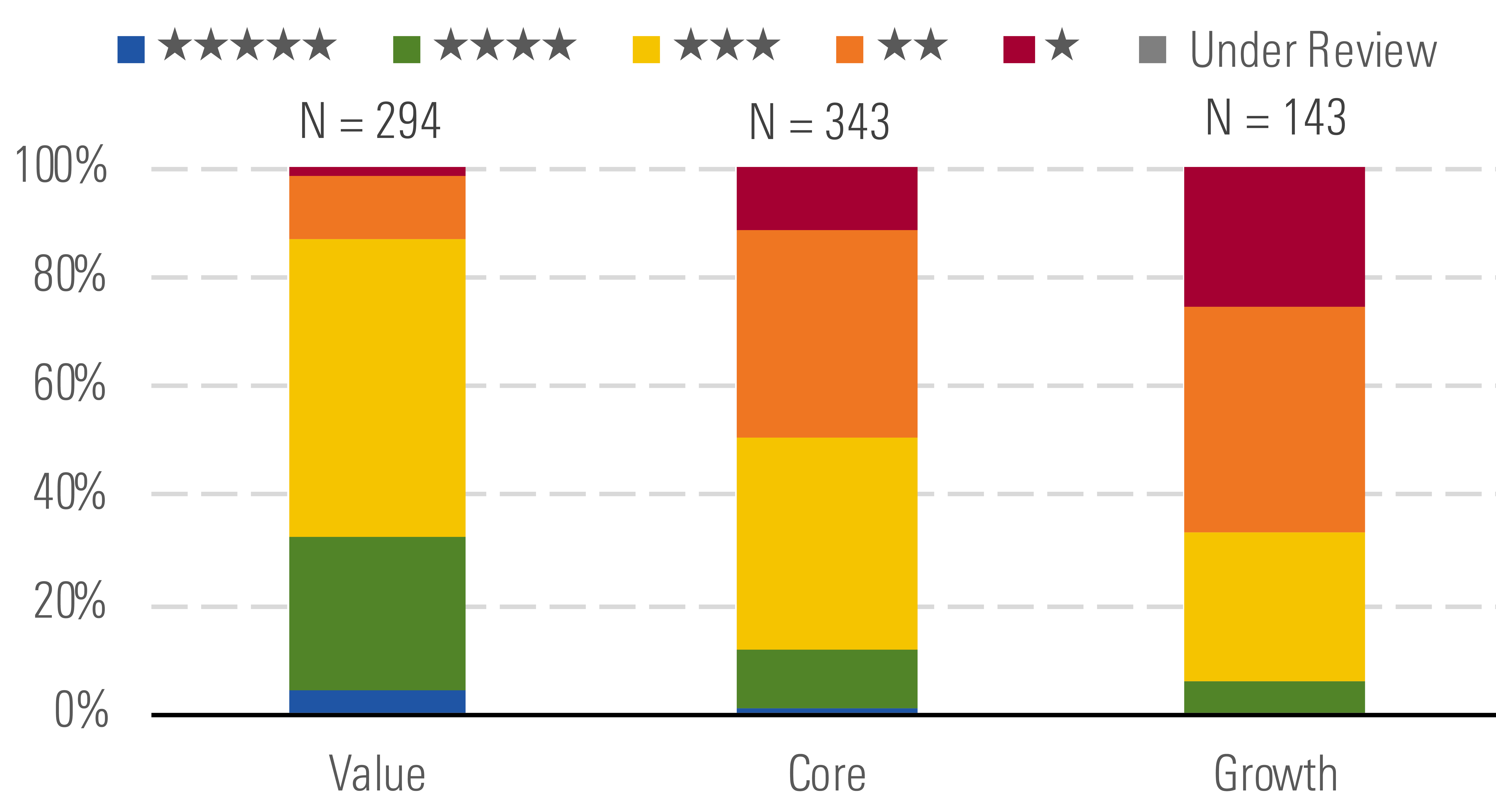Quarterly Market Outlook: Opportunities in Value and Energy Stocks
The broad equity market is trading at a 6% premium to our fair value estimates.
During the fourth quarter, equity prices continued their march higher. Quarter to date through Dec. 21, the Morningstar US Market Index rose 12.78% and year to date has increased 19.37%. By aggregating the fair value estimates of the stocks in our North American coverage, we view the broad market as overvalued, trading at a 6% premium to the capitalization-weighted calculation of our intrinsic value estimates. Much of the broad market-cap-weighted valuation is upwardly skewed by several significantly overvalued mega-cap stocks; even so, the rally this quarter has left far fewer pockets of undervaluation.
Across our North American coverage, only 18% have 4- or 5-star ratings. Analyzing our sector coverage, only energy remains undervalued. Breaking the market down by the Morningstar Style Box reveals that only value stocks remain undervalued, especially within small-caps.
- Trading at a 6% premium to our fair value estimates, the U.S. equity market is priced for perfection.
- Energy is the only sector that remains undervalued, and value stocks are only category in the style box that are undervalued.
- At a price/fair value of 1.20, technology remains the most overvalued sector in our coverage, as there are no 5-star-rated stocks and only 12 4-star stocks, accounting for less than 12% of our coverage.

Less Than 20% of Our U.S. Coverage Remains Undervalued - Morningstar
Priced for Perfection Markets often act like a pendulum, with momentum swinging prices past their fair values, both to the downside as well as to the upside. Earlier this year, our price/fair value metric fell to almost its lowest level in a decade, indicating that the market was significantly undervalued. Since the market bottom in March, price/fair value ratios steadily rose with the recovery in the equity markets. After the recent surge in equity markets during the fourth quarter, the broad equity market in the U.S. is now trading 6% above our intrinsic value. In our view, the market is priced to perfection. We forecast that GDP will rise 4.7% in 2021, 2.9% in 2022, and will return to almost its prepandemic trend by 2024; however, to justify the prices that many stocks are currently trading at, investors appear to be pricing in even stronger assumptions.

Broad Market Index Has Risen Above Our Fair Value Estimates - Morningstar
Quarter to date through Dec. 21, the Morningstar US Market Index had surged 12.78%. Performance was led by small-cap stocks, which rose 28.78% compared with mid-cap and large-cap stocks, which gained 18.22% and 9.70%, respectively. With a return of 15.55%, the value category outperformed growth and core, which gained 12.13% and 11.40%, respectively. Gains have been broadly distributed across sectors, but energy has been the star this quarter, rising 29.02%. Yet, even after this surge, at a price/fair value of 0.71, we continue to view the energy sector as the most and now only sector that remains undervalued.

Mid-cap sector greatest number of undervalued stocks, small-cap highest % - Morningstar
Looking ahead, we maintain our expectation that value stocks will outperform core and growth over the long run. Value stocks should benefit from the strong economic rebound in 2021 as economic activity normalizes. Across sectors, we continue to expect energy stocks to outperform the broader market. Through Dec. 21, oil prices have risen to $48 per barrel from $39 at the end of the third quarter, and we project oil will reach $55 per barrel by the middle of this economic cycle.

Value stocks attractive compared with core and growth stocks - Morningstar
The greatest near-term risk to the markets would be a hiccup in the approval, rollout, or uptake of a coronavirus vaccine. Among individual stocks, many mega-cap stocks are significantly overvalued. Any failure to meet high investor expectations could not only send these stocks down but pressure overall market sentiment. Finally, surging economic activity could lead to idiosyncratic bouts of cost inflation, pressuring operating margins if a company does not have pricing power. In such an environment, companies with a wide or narrow moat are expected to be able to quickly pass through heightened costs to customers.

/s3.amazonaws.com/arc-authors/morningstar/54f9f69f-0232-435e-9557-5edc4b17c660.jpg)
/cloudfront-us-east-1.images.arcpublishing.com/morningstar/F2S5UYTO5JG4FOO3S7LPAAIGO4.jpg)
/cloudfront-us-east-1.images.arcpublishing.com/morningstar/7TFN7NDQ5ZHI3PCISRCSC75K5U.png)
/cloudfront-us-east-1.images.arcpublishing.com/morningstar/QFQHXAHS7NCLFPIIBXZZZWXMXA.jpg)
:quality(80)/s3.amazonaws.com/arc-authors/morningstar/54f9f69f-0232-435e-9557-5edc4b17c660.jpg)